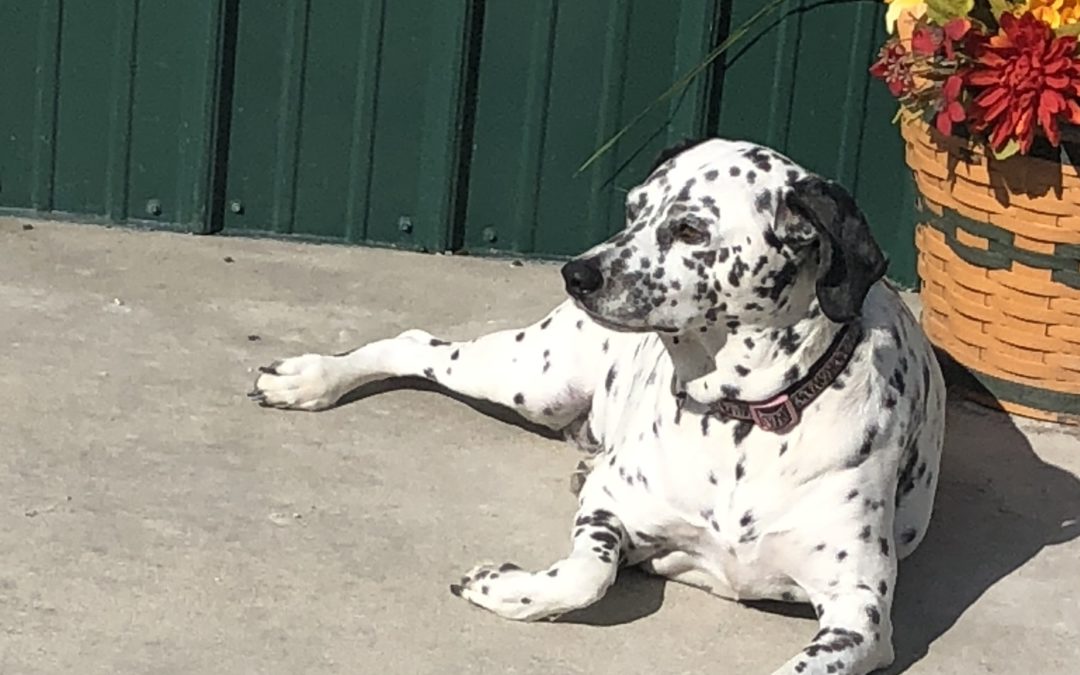How Hot is Too Hot?
It’s officially summer. People want to be outside with their dogs all the time, and who could blame them? As pet owners, we sometimes forget that they are health risks during the warmer months just like there are for people. There are now more things than we realize that we have to watch out for when walking or playing with our furry friends outside, during the day. One of those things is hot sidewalks. So really, how hot is too hot?
Hot Surface Temperatures
Surface temperatures can vary depending on the type of surface, wind speeds, humidity, and more. It is important to know what these are so that you can educate others about them when they come through your clinic.
Concrete
Most of your clients will be walking their dogs down the sidewalks in the town that they live in. Concrete is the most common hot surface that your clients and patients will be walking on during the day. With that said, there are a few key things to know about walking on concrete so you can better inform your clients of the potential risks. Concrete is not a reflective surface, therefore, it absorbs the heat that it takes in throughout the day and can store it for a VERY long time. This means that even though the temperature has is cooled off in the evening, the surface could still be hot.
Ambient Temperature vs Surface Temperatures
| Ambient Temperature | Surface Temperature |
| 77 degrees F | 125 degrees F |
| 86 degrees F | 135 degrees F |
| 87 degrees F | 143 degrees F |
Table 1.
If a pet parent is concerned about walking their dog, advise them to do the 5-second rule test. This is a quick test that people can do every time they want to walk their dog so they know if it is safe to walk their furry friend.
Performing the 5 Second Rule Test: place the backside of your hand on the surface that your dog will be walking on. If you cannot hold your hand on the surface for longer than 5 seconds without it hurting, it is not safe to walk your dog. If you can hold your hand there with no issues you are okay to walk your pet.
While this test shows to be a fairly effective way to know if the surface is safe to walk on, there are other health concerns to be aware of while walking as well. These include signs of Heatstroke which we talk about in a previous blog post. Dogs, especially those of brachycephalic breeds, are at risk of a heat stroke when temperatures are over 70 degrees Fahrenheit. So remember that even if the dog isn’t on pavement, it can still be too hot.
Other Hot Surface Temperatures
There are other common surfaces that can be chosen to walk a dog on as well. Below is a table that outlines some of the surfaces that could also be considered harmful to your client’s pet. The surfaces below can average the paired temperatures if left in the sun for an extended period of time on a moderately hot day.
| Grass | 80 degrees F – Even though it is grass, it can still be hot enough to harm your client’s pet. |
| Wood | 90 degrees F – Besides getting a splinter, they are also at risk of burning their paw pads on this surface. |
| Composite decking | 100 degrees F – Most pet parents don’t give a second thought about leaving their dog on the deck while they do some housework or outdoor work. This could be problematic if shade, nor a place for them to be off the surface is provided on a hot day. |
Recognizing Symptoms of a Burn
Sometimes the symptoms of a burn can be small, and difficult to notice even if a person is looking for them specifically. More often than not, however, the dog will exhibit signs of a burn within a minute of it occurring. It only takes 60 seconds for a burn to appear from a surface that is 125 degrees Fahrenheit or higher. If you refer up to the chart listed earlier in this article you will see that it is equivalent to 77 degrees Fahrenheit ambient temperature.
Symptoms Include
- Limping or avoiding walking
- Licking or chewing feet
- Darker than normal paw pads
- Visibly damaged
- Redness or blisters
There are more examples that could be shown if a paw pad of a pet is burned, but these are the more prevalent.
When to call the Vet (aka you)
There are steps that an owner can take on their own while they are either waiting on your response to their call or en route to your clinic. These can include rinsing out the burn with cool water, not cold or warm. They can also wrap the paw so that the pet doesn’t get an infection. Infection is something that can happen quickly on the paw because it comes in contact with everything on the ground.
It is important to educate your client about what to do if their furry friend gets a burn on their paw pads. Education and communication are key when talking to clients. Use this infographic to put on display in your hospital to help better understand and educate clients on this subject.

